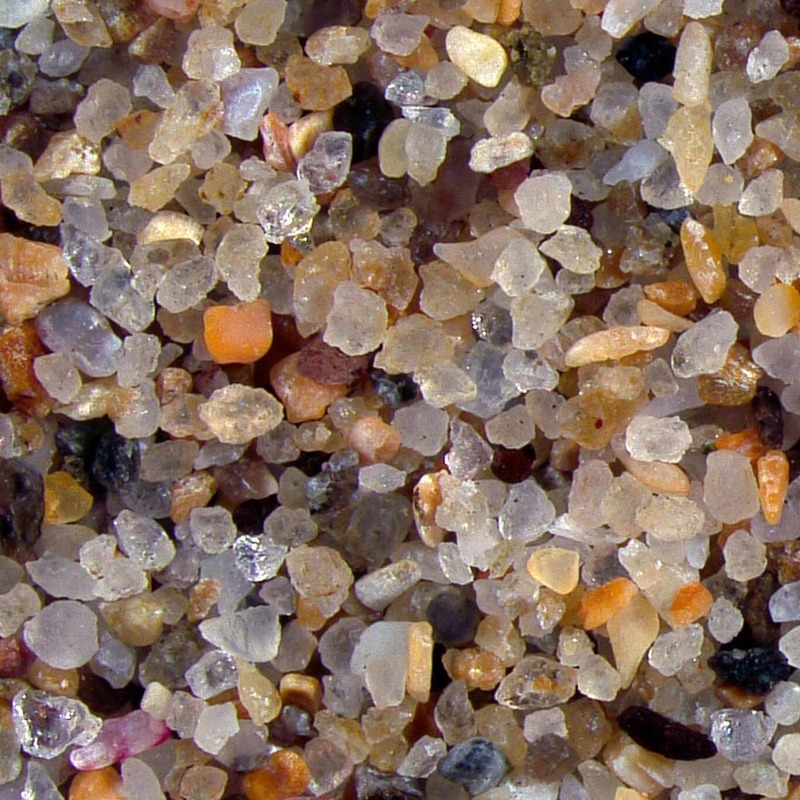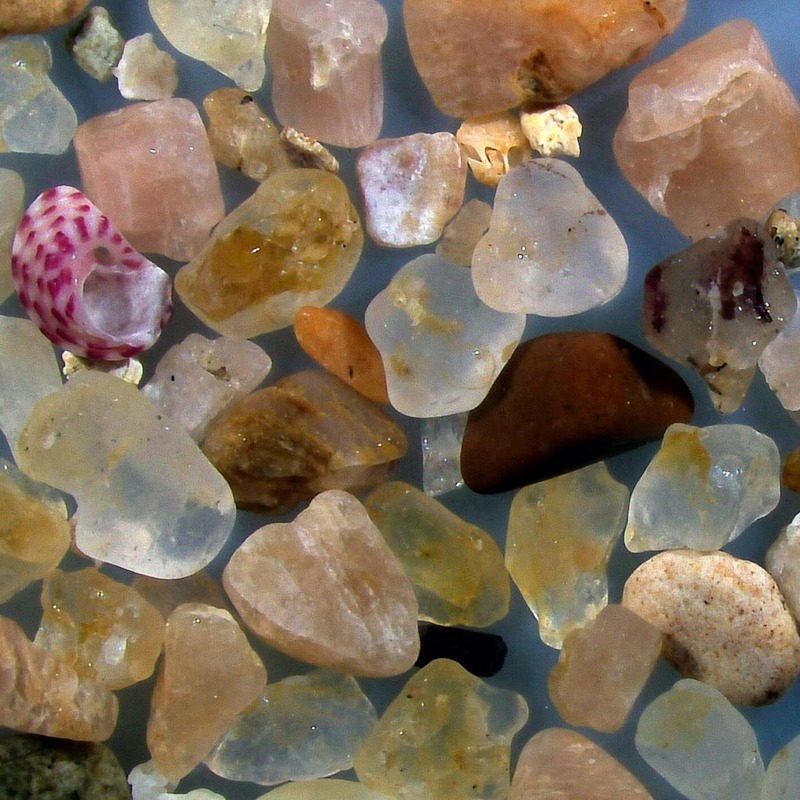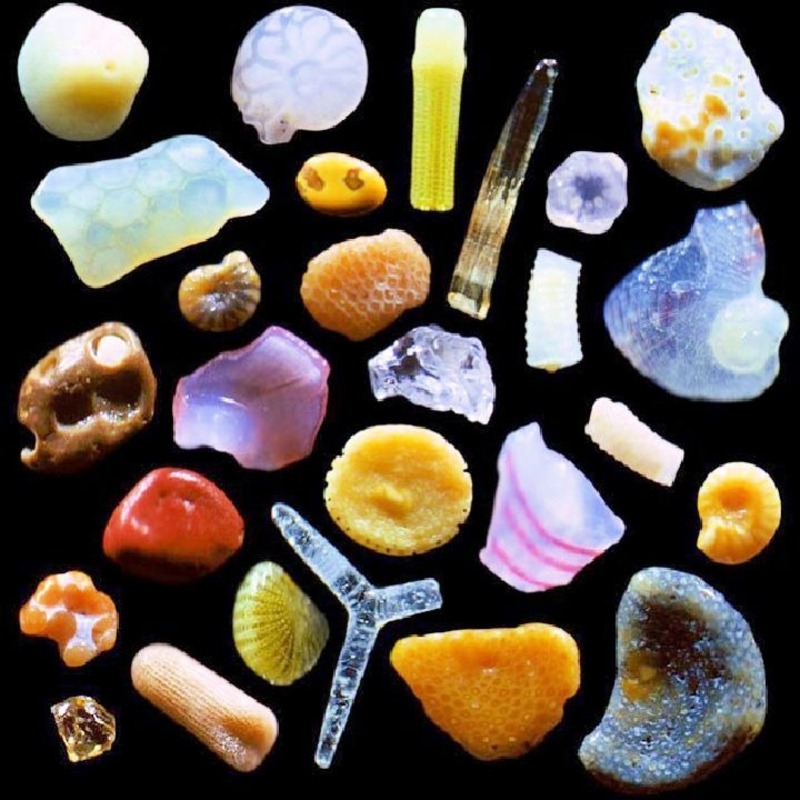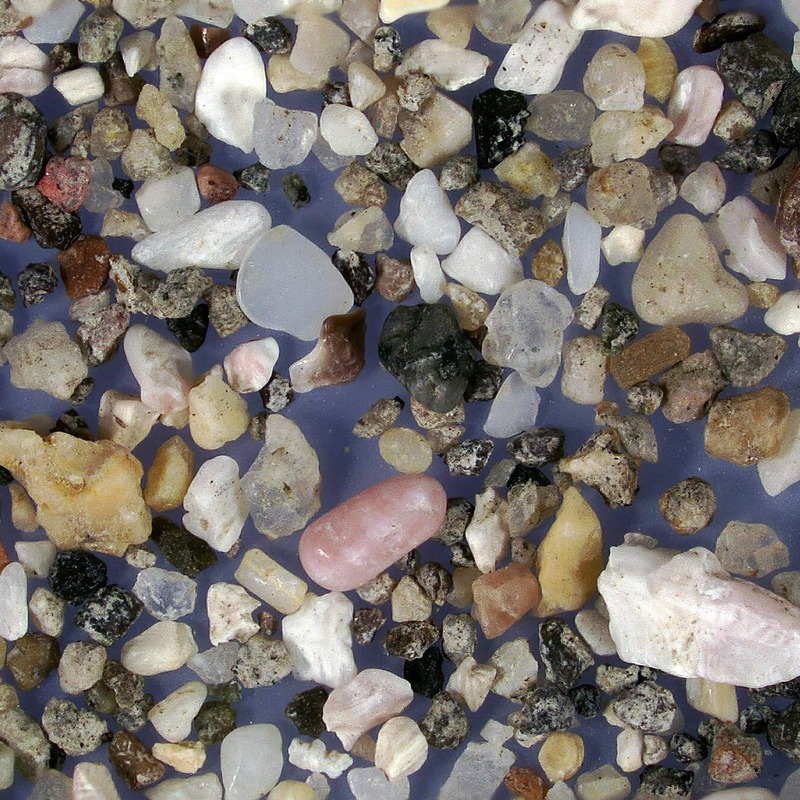What is Sand?
Sand is a natural substance that you find at the beach, in deserts, and along riverbeds. It consists of tiny particles of minerals and rock, often quartz, due to its abundant and durable nature. What makes sand fascinating is its creation from the unending process of weathering and erosion. Rocks break down over time into smaller pieces through these natural processes, eventually becoming sand grains.Learn about examining sand under microscope! Discover types of sand, preparation techniques, and applications in environmental science.
It isn’t just about tiny rocks, though. Sand also includes fragments of marine organisms like corals and shells in some places. These biological contributions often give sand its unique color and texture. When you look at white tropical beaches, the sand there is mostly made of finely ground coral and shells, hence its hue.
Each grain of sand holds a story of geological history. It can take thousands to millions of years for a single grain to form. In that sense, a handful of sand is like a window into Earth’s past. So, when we study sand under a microscope, we’re not just seeing small particles – we’re witnessing the testimony of time and nature’s endless cycles.
The diversity of sand is apparent when you consider that no two grains are exactly the same. For example, volcanic areas may have black sand, while areas with high quartz content will have clearer, more typical sand. By examining ‘sand under microscope’, scientists and enthusiasts can uncover the secrets of these granules, far beyond what the naked eye can perceive.

The Science Behind Sand’s Composition
Sand may seem simple, but its composition is quite complex. Under a microscope, sand reveals an intricate mosaic of minerals. The most common mineral in sand is quartz. This mineral can withstand the forces of weathering thanks to its hardness. Quartz appears clear or white, but can also take on other colors with impurities.
Other minerals also make up sand in smaller amounts. For example, feldspar is common in many sands. It comes in a range of colors like pink, white or grey. Some sands may even contain olivine, a greenish mineral from volcanic rock. Each mineral adds to the sand’s overall character. The appearance tells of the sand’s origin and journey.
In addition to minerals, organic materials often feature in sand. This includes bits of coral, shell, and sometimes even microorganisms. These organic parts usually come from marine environments. They give some beaches their unique colors, like the pink sands of Bermuda. All these components mixed together create the sands we see and feel.
Geological processes, such as erosion and weathering, shape these components. They break down rock into finer pieces over time. Rivers carry these pieces to oceans and seas. Waves and tides then grind them down to even smaller grains. The final result is the sand we find beneath our feet.
Understanding sand’s composition helps us read Earth’s history. It unveils the processes that formed our natural landscapes. Every grain tells a tale of time, waiting under a microscope to be revealed.
A Closer Look at Sand Grains
Taking a closer look at sand grains is a journey into the minuscule marvels of nature. When we place ‘sand under a microscope’, each grain stands out as a tiny, intricate gem. The diversity is stunning. Some grains might be jagged, the products of recent breakage. Others are smooth, polished by time and the elements.
These grains aren’t just bits of rocks; they’re fragments of history. A microscope reveals the lines and layers of their past. The colors show a pallet of minerals and organic matter. Blacks and greens may come from volcanic areas or ancient plant life embedded in the stone.
In some sands, the life of past oceans twinkles back at us. Tiny shell fragments and corals add texture and light. They remind us of the living world that once was. These biological particles often stand out, giving us clues about the sand’s origins.
But the shape of each grain is what tells the most about its history. Rounded grains have been on longer journeys, tumbled by water or wind. Sharp-edged grains might have come from a nearby rockfall, newly made. Size also matters. Larger grains indicate a gentler history, while fine sands speak of powerful forces at work.
‘Sand under microscope’ unfolds many secrets. The grains’ composition, shape, size, and color give us a deeper appreciation of the natural world. They also hint at how our planet evolves, grain by grain. Each is a piece of the Earth’s complex puzzle.
The Role of Magnification in Sand Analysis
Magnifying sand grants us the ability to analyze its intricacies. A microscope brings to light details invisible to the naked eye. The role of magnification in sand analysis is crucial. It allows experts to observe sand’s granular structure up close. Soil scientists and geologists often rely on this method. They study sand’s particle size, shape, and mineral composition through magnification.
These tiny details tell much about the sand’s history. For example, microscope examination can reveal if the sand is from a volcanic beach or a coral reef. The shape of the grains can indicate their journey — whether they have been weathered by wind or water.
Magnification can also help in identifying environmental changes. Changes in sand composition may signal erosion or pollution problems. Identifying these early can aid in protecting our natural environments.
Overall, ‘sand under microscope’ plays a vital part in scientific research. It unlocks a world of information about natural processes and environmental conditions. For anyone curious about the planet’s history or the power of nature, a closer look at sand can provide astonishing insights. This closer analysis can guide environmental conservation efforts and teach us about Earth’s dynamic systems.

Diversity in Sand: Variation Across Different Beaches
Beaches around the world boast a variety of unique sands. The ‘sand under microscope’ studies reveal this diversity. Different regions have distinct colors and textures. For example, volcanic regions offer black, iron-rich sand. Tropical locations, on the other hand, might have white or pink sand. These variations reflect local geology and biological activity.
Black sands, rich in magnetite, come from eroded volcanic materials. They’re common in places with a history of volcanic activity. In contrast, the white sands of tropical beaches often contain crushed coral and shell fragments. These contribute to the sand’s lighter coloration. Pink sands gain their hue from tiny organisms, like foraminifera, and bits of coral.
Even beyond color, texture plays a role in sand diversity. Some beaches have coarse, pebbly sand, while others have fine, powdery grains. The forces shaping them, like waves or currents, affect this characteristic. Furthermore, the mineral content from local rocks influences the grain size.
Studying ‘sand under microscope’ can show a beach’s history. It can tell us about past volcanic eruptions or the marine life that flourished there. It gives clues on the environmental conditions that shaped the sand. This underscores the importance of magnification in understanding our natural world. Every beach tells a story. A close look at its sand can reveal chapters of Earth’s dynamic history.
Environmental and Geological Insights from Sand
The insights gleaned from observing ‘sand under microscope’ are truly environmental and geological treasures. Each granule serves as a chronicle of Earth’s past, telling tales of formative processes that have shaped our landscapes over millennia. Here are some key insights that can be discovered through magnified sand analysis:
- Source and Journey: The origin of sand tells us about the rock types in its source region. The journey of sand grain, from mountain to river to beach, is etched into its shape. Rounded grains may have traveled long distances, while angular grains might be local residents.
- Climate History: Differences in grain structure can hint at past climates. For example, larger, well-rounded grains might suggest a history of intense weathering under tropical climates.
- Environmental Conditions: Variations in mineral composition can indicate different environmental conditions. For instance, black sands rich in volcanic minerals point to a geologically active area with past volcanic eruptions.
- Environmental Changes: Changes in sand composition over time can signal shifts in climate, sea levels, or human impact such as deforestation and coastal development.
By closely examining ‘sand under microscope’, scientists can piece together a more complete picture of Earth’s geological and environmental history. This microscopic analysis helps us appreciate the silent yet continuous transformation of our planet, one grain at a time.
Technological Advances in Sand Microscopy
The progress in microscopy has transformed how we observe ‘sand under microscope’. New technologies provide clearer images and data on sand grains. Here are some advancements which are worth noting:
- High-Resolution Imaging: Modern microscopes offer greater magnification power. They reveal finer details of sand grains that were once unclear.
- 3D Microscopy: This technique gives a three-dimensional view of sand particles. It helps in understanding the contours and textures more vividly.
- Spectral Analysis: Some microscopes can analyze the wavelengths of light reflected off the grains. This tells us about the mineral composition without chemical tests.
- Digital Microscopy: With digital microscopes, images are instantly available on a computer. Researchers can easily share these images for collaboration.
- Portable Microscopes: Scientists can now carry handheld microscopes into the field. They can study ‘sand under microscope’ in its natural setting.
These technologies not only enhance our knowledge of sand but also pave the way for new discoveries in geology and environmental science.

How to Observe Sand Under a Microscope at Home
Exploring sand under a microscope isn’t just for scientists in labs. You can also do it at home. Start by gathering a few samples of sand. Look for different colors and textures if you can. This will make the observation more interesting. Next, you need a microscope. A simple light microscope will do the trick. Many are affordable and easy to use. Here’s a step-by-step guide to get you started:
- Prepare Your Sand Sample: Place a small amount of sand on a microscope slide. If you have a slide with a well, it helps to keep the sand in place.
- Use a Cover Slip: Gently lay a cover slip over the sand. This stops the grains from moving when you examine them.
- Start with Low Magnification: Look at the sand under the lowest power first. Get an overview of the shapes and colors. You might already notice the variety of grains.
- Increase Magnification Slowly: Move to a higher magnification to see more details. Look for different mineral content and grain sizes.
- Focus Carefully: Use the microscope’s focus knobs to get a clear image. Each grain’s unique details will start to show up.
- Take Notes: It’s a good idea to write down what you see. Note the colors, shapes, and any patterns. This helps you learn and remember your observations.
- Compare Samples: If you have different sand types, compare them. See how the beach sand differs from desert or river sand. Each type tells a different story.
- Practice Safety: Remember to handle the microscope carefully. Also, make sure not to inhale any fine sand particles.
By following these steps, you’ll gain a closer look at the tiny wonders hidden in sand. It’s amazing what secrets a simple grain holds when you view it under a microscope at home.





